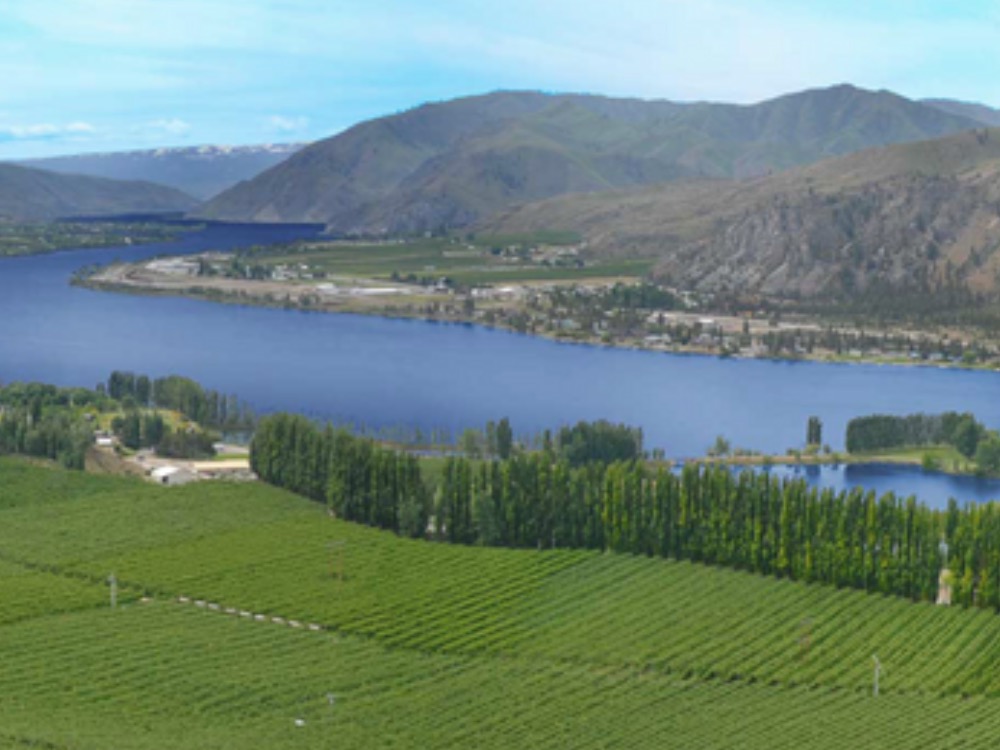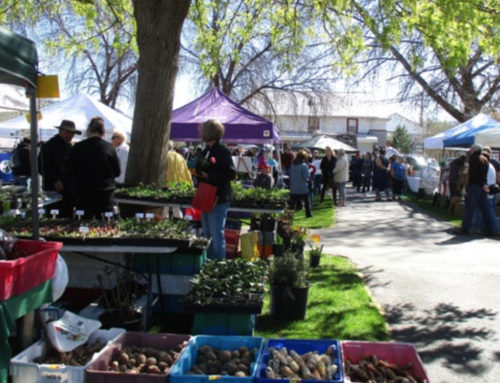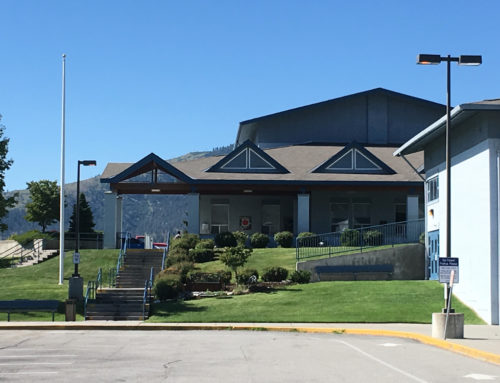A partnership pilot program with the Department of Ecology
information released; Auvil Fruit Company photo
Ecology’s Office of the Columbia River recently wrapped up a years-long pilot that has saved 50% more water at a Vantage fruit orchard. This conservation and water banking project was a partnership with Auvil Fruit Company, a major producer of premium apples and cherries in Central Washington.
New water banks
Through Ecology’s Trust Water Rights Program, this unique project placed approximately 4,300 acre-feet per year (ac-ft/yr) of conserved water into two water banks – one owned and managed by Auvil Fruit and the other by Ecology.
Auvil’s water bank has a starting balance of just under 2,870 ac-ft/yr, which can now be used to provide flexibility in meeting future farming operation needs.
Ecology’s water bank, with approximately 1,430 acre-feet of water, will be used to help meet water supply needs in the region. These include developing water supply for new uses, enhancing instream flow, and providing water to junior users who are curtailed during droughts.
Increasing drought resilience
At its Vantage orchards, Auvil had isolated interruptible, or junior, water rights assigned in patches across the property. Those areas could be completely curtailed during a drought, which put the trees at high risk of loss or serious damage.
While this is bad news for any grower, it is particularly concerning for orchard operations, because fruit trees take many years to establish.
We worked with Auvil to consolidate and reallocate its junior and senior water rights across the orchards in a blended manner. As a result, Auvil’s crops are now significantly more drought resilient.

Ecology staff on site in Vantage
Innovative water conservation
Of several improvements Auvil made to its irrigation system, covering the orchards with shade cloth saved the most water.
We conducted a study with Aspect Consulting using two high-tech weather stations. We placed one in an area covered by shade cloth and the other out in an adjacent uncovered area. From there, Ecology and Aspect could determine how much water shade cloth saved compared to the other improvements.

Shade cloth installed over Auvil’s orchards
We found that shade cloth improved a number of growing conditions. The coverage greatly increased relative humidity, drastically reduced wind speed, stabilized soil moisture, and cooled the air temperature. Combined, all these changes now help Auvil use much less water to produce fruit.
To boost its water conservation, Auvil also installed soil moisture monitors and replaced overhead sprinklers with a drip system that delivers water directly to the root zone of the trees. The soil monitors and drip system communicate to regulate water application in real time. This way, the trees receive only the water they need for optimum fruit production and no more.
Auvil also removed thirsty poplar tree windbreaks, because they became unnecessary after the wind suppressing effect of shade cloth. This eliminated one irrigation need entirely.
Long-term monitoring
For each action implemented under this project, Ecology will conduct ongoing compliance assessments to ensure Auvil’s future water use stays within the newly established lower use parameters.
Auvil is required to participate in annual compliance meetings and submit two written reports each year, one to report how much water is used and another to record water bank transactions.
Ecology staff visit Auvil to tour its operations and see the effects of water conservation improvements.
Ecology assigned a dedicated water master to monitor the project site. The water master will ensure that the improvements remain in place, are kept in good working order, and remain effective into the future. This on-the-ground monitoring will enable us to act quickly to ensure ongoing compliance.
A success story
This project is an inspiring example of a how an innovative public-private partnership can contribute to protecting, preserving, and enhancing Washington’s environment for current and future generations. We’re hopeful that this success story will provide a blueprint for future water management and conservation projects.
For additional information about this project, and other DOE programs, visit the Department of Ecology website.









